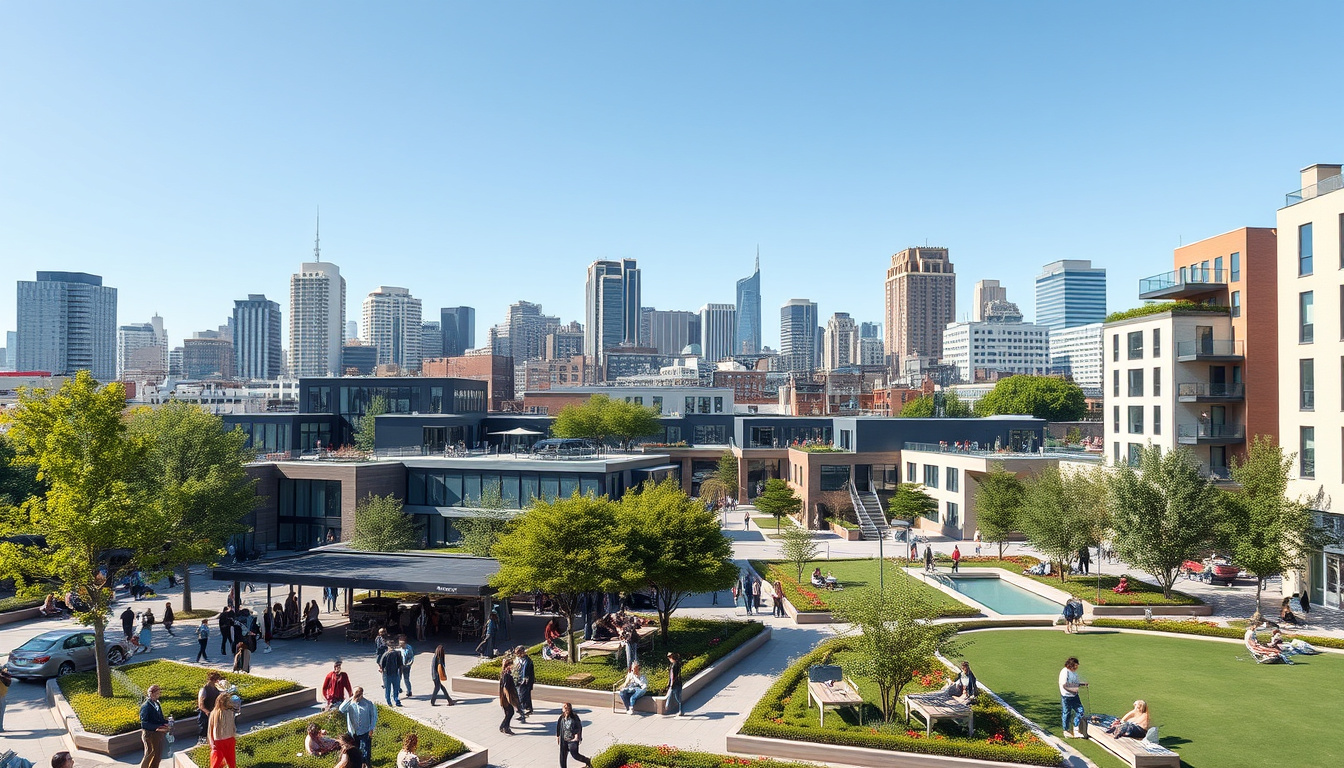As cities continue to expand and evolve, the term ’infill developments GTA’ has gained significant traction among urban planners, developers, and residents in the Greater Toronto Area. Infill developments refer to the process of building on vacant or underutilized parcels of land within existing urban areas, as opposed to expanding into the suburbs or rural regions. This article delves into the definition and importance of infill developments, highlights the myriad benefits they provide for the Greater Toronto Area, and addresses the challenges and considerations that urban planners must navigate to ensure successful project implementations.

Key Takeaways
- Infill developments involve utilizing vacant or underused land within urban areas to enhance density and community.
- The Greater Toronto Area (GTA) benefits from infill developments by promoting sustainability and reducing urban sprawl.
- Such projects can lead to improved access to public transportation and essential services for residents.
- Challenges for infill developments in the GTA include zoning restrictions, community resistance, and funding issues.
- Successful infill projects require careful planning and collaboration among stakeholders to address urban planning considerations.
Understanding Infill Developments: Definition and Importance
In the Greater Toronto Area (GTA), infill developments are a vital component of urban planning and growth. These developments involve the construction of new buildings or renovation of existing ones in previously developed areas, rather than expanding into undeveloped land. Understanding infill developments is essential as they promote sustainable growth, maximize the use of existing infrastructure, and help preserve green spaces. By utilizing underutilized lots, vacant buildings, or vacant land, infill developments enhance community density, which can lead to more vibrant neighborhoods and a reduction in urban sprawl. Moreover, they also offer opportunities for diverse housing types, catering to a growing population while maintaining the character of established communities. The importance of infill developments in the GTA cannot be overstated, as they help meet housing demands, support local economies, and contribute to environmentally responsible urban planning.
The Benefits of Infill Development in the Greater Toronto Area
Infill developments in the Greater Toronto Area (GTA) are rapidly gaining attention as a sustainable solution to urban growth and housing shortages. These developments refer to the practice of building on vacant or under-utilized lots within existing urban areas, rather than expanding the city’s boundaries outward. One of the significant benefits of infill developments in the GTA is their potential to optimize land use, effectively reducing urban sprawl while utilizing resources more efficiently. By repurposing vacant sites, developers can enhance community vitality, create diverse housing options, and increase accessibility to amenities such as public transit, parks, and shops. Furthermore, infill projects often promote higher density, which can lead to improved environmental sustainability through reduced reliance on cars, decreased greenhouse gas emissions, and the preservation of surrounding green spaces. As the GTA continues to expand, embracing infill developments is not only beneficial for urban planning but essential for fostering vibrant, livable communities.
‘The cities of the future are those that recognize the potential of their existing urban fabric and embrace infill development as a strategy for sustainability and growth.’ – Anonymous

Challenges and Considerations for Infill Projects in Urban Planning
In recent years, infill developments in the Greater Toronto Area (GTA) have gained prominence as a solution to urban sprawl and housing shortages. However, these projects come with their own set of challenges and considerations that urban planners must navigate. One major challenge is the resistance from existing residents who may be concerned about increased density, changes to neighborhood aesthetics, and potential disruptions during construction. Additionally, infill developments often require creative solutions to accommodate the existing infrastructure, which may not be equipped to handle the heightened demand for services such as public transport, water supply, and waste management. Moreover, zoning regulations can pose significant hurdles, as many areas have strict guidelines that can limit design innovations and project feasibility. Urban planners must also consider environmental impacts, ensuring that new developments promote sustainability. Balancing these factors is critical to successfully executing infill developments in the GTA, ultimately contributing to more livable and vibrant urban environments.
Moose Realty
Mustafa “Moose” Aslamzada | Real Estate Agent
Royal LePage Signature Realty
[color=rgb(71, 71, 71)]30 Eglinton Ave W Suite 201, Mississauga, ON L5R 3E7[/color]
📞 647-988-7325 | ✉️ moose.a@royallepage.ca
🌐 www.MooseRealty.ca
Connect with Us
Facebook | Twitter | LinkedIn | Instagram
